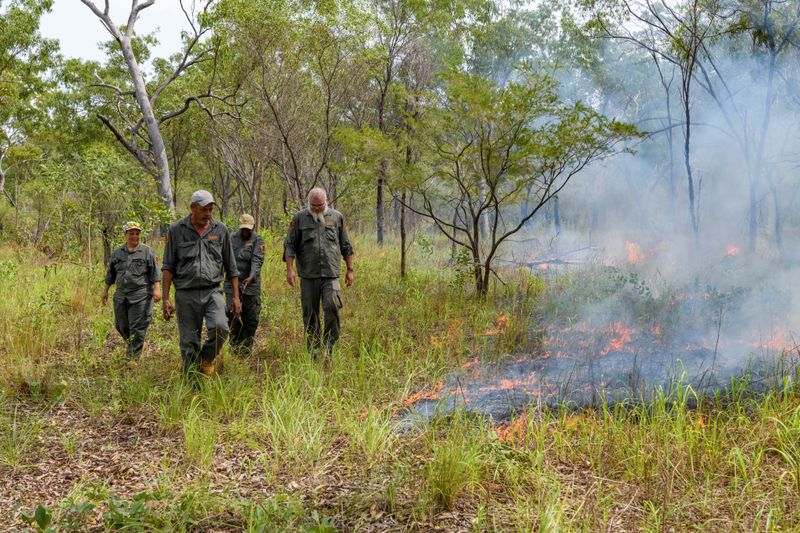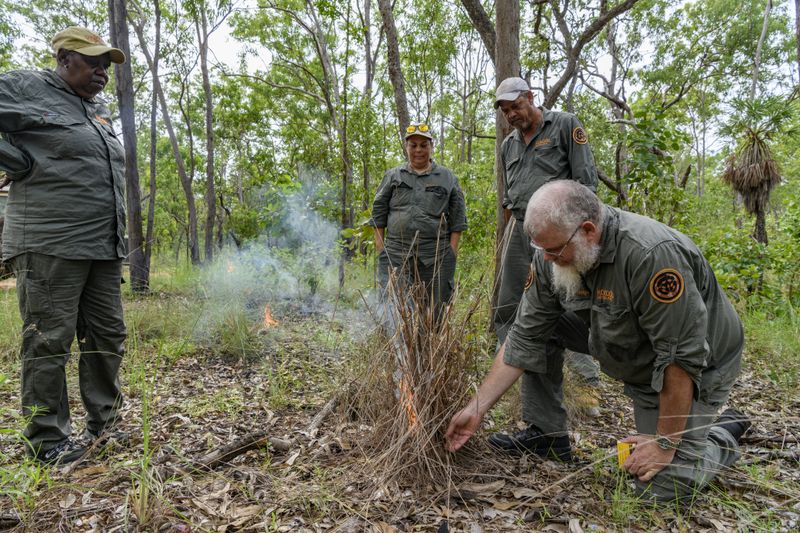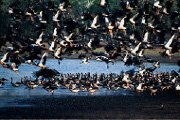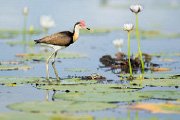Kakadu cultural burns
In Kakadu, park rangers and Traditional Owners work together using cultural burning practices to protect land and Country.

Kakadu’s Traditional Owners, the Bininj/Munguy, have used fire for generations as a management tool for practical and cultural reasons.
After the wet season, from around April through to July, as the country starts to dry out and the weather becomes cooler, Bininj/Mungguy begin to light fires in strategic areas. Small, cool and patchy grass fires are lit across the Kakadu landscape.
In addition to planned burning efforts in the early dry season, Traditional Owners and Parks Australia staff use the wetter months in January and February to their advantage. Wet season burning is particularly effective for reducing high fuel load areas.

The key to using fire as a land management tool is to know the country and burn at the right time of year. A cool fire on a winter’s day will burn slowly through the grass and be extinguished in the evening when temperatures drop.
Low intensity fires during the wet and early dry season serve many purposes, including creating a barrier for severe and large fires that can burn out of control in the late dry season when the country is much drier, the grass is fully cured and temperatures soar.
Fire generates new life, and by using it as a land management tool the Bininj / Mungguy can support a diverse habitat that provides food and shelter for wildlife and while also reducing the chance of wildfires burning out of control during the hotter drier months.
With climate change making fire management more important than ever, this is an inspiring example of how Indigenous knowledge is leading the way in protecting our environment.

Take the first step
A journey of 1000 miles begins with a single click.
Enter your email to get free trip planning advice from Kakadu rangers.




